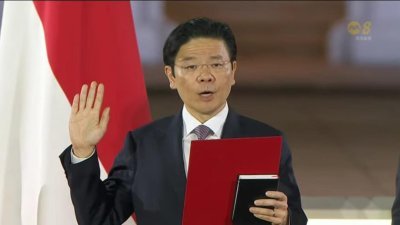曾经两度遭遇喊停的吉隆坡—新加坡高速铁路(简称隆新高铁)建设方案,自团结政府上台后,又出现了转机,有重新恢复修建的可能性。据笔者的理解,之前喊停的原因是政治因素多于经济因素,尤其是受前首相马哈迪影响的种族因素以及马新两国之间合作的得失问题,其内容很大成份是马哈迪等人看不得新加坡在此高铁建成之后可得到较大马更多的好处。
其实这个核算也很简单,吉隆坡和新加坡均为隆新高铁的两头终端站,衔接新加坡终端的可是远比吉隆坡国际机场更为成功与高效的樟宜国际机场,目前每年吐纳的国际游客人数超过吉隆坡国际机场。凭借新加坡的国际金融地位和区域影响力,吉隆坡还远比不上。再说,隆新高铁路线全长328公里,衔接新加坡仅是一小段,新加坡只需负责承建属于自己的15公里路段,投资额小。
如此评审马新双方得失,马哈迪主义及其逻辑思维似乎很在理。更为极端或缺乏国际视野的马哈迪追随者甚至可能联想到,要建高铁不如建到新山就好,否则连接到新加坡就只能让新加坡得益,对马方好处不多。对此类言论,笔者想就经济地理原理分析一下,与诸位看官分享看法。
但凡一项大型投资项目的开发,均会导致地理空间一定层次的良性扩散作用(spread effect)和非良性的极化作用(backwash effect)。隆新高铁的开发,意味著吉隆坡终端大马城中心及其周边地段将获益、地价飙升,吉隆坡至新山沿途西海岸停留站城市周边地区也会起到扩散作用的惠利,增强发展潜能,人口和商业活动向它靠拢。
扩散作用发挥的同时,东海岸较落后地区将出现涓滴效应,吸引其人口向获扩散惠利地点移动并寻求就业机会。随之较落后地区基于人口压力下降,剩馀人口的人均收入将会获得提升。人口压力下降和工资的上升,将促进乡区各类生产活动的现代机械化和自动化。
总的来说,高铁的成功运营将很大程度促进城市群之间以及城乡之间的人流和物流互动率,产生聚集经济效应,拉动沿线整体区域的联系效率与质量,带动较滞后地区人口流入以刺激经济发展,其过程还可协助大马经济的转型,以迈进更高层次的发展阶段。
从各民族融合的层面看,高铁系统将会带动更多较落后地区的马来人、华人和印度裔聚居到新开发的发展地段,包括停留站城市周边二、三线中小城镇。
经济效应
尽管修建高铁具有诸多有利因素,但其经济可行性还是有待进一步审核。根据最新消息,高铁建设的成本和风险将由私人投资者承担,估计建造费介于200亿至250亿新元(约620亿至775亿令吉)之间。消息续称,有5家大马上市公司有希望标得承建工程,它们分别是杨忠礼机构,MMC机构,马资源,WCT控股和成功置地。
至于为何不向拥有先进技术的国际企业招标,我想不外是给予本地企业承建机会,成功标到工程路段者,可以自行邀请持有先进技术的外国公司进行合作。承建模式包含设计-建设-融资-运营-移交五个程序。最后程序是在运营权结束后移交资产管理权,由谁接收管理权乃是关键问题,马新两国政府务需共同协商,严格负责处理。
隆新高铁的复办,意味著大马政府无需给新加坡赔偿,因此可以省下先前答应赔偿的1.02亿新元(3.5亿令吉)。当前大马已立在先进国的门槛,隆新高铁无疑将给我们带来新的突破机遇。马新合作只要能稀释前嫌,坦诚相对,互相以大局为重,排除先前巫统政府大型项目惯用的政商朋党作业,就此取得新加坡的信任,高铁的成功修建与经营,是指日可待的!
说到最后,高铁虽然能加强城市间与城乡间的联系与流动效率,但它也同时会促使欠发达地区的资金、人才和其他资源向较发达及行政效能较高的地区聚集,其结果是实力强的城市群获利更多,与落后乡区的差距扩大,带来负面的极化效应。基于这一点,中央政府必须未雨绸缪,作出调整的政策,使两极化现象最小化。
(本文首次刊登于新加坡报章,经作者同意略作修改转载。)
黄大志《再谈一波三折的隆新高铁》英文版:On the Twists and Turns of the Kuala Lumpur-Singapore High-Speed Rail
The development plan of the Kuala Lumpur-Singapore High Speed Rail which was suspended twice, has seen a turn for the better in the 11 months since the Malaysian unity government came to power, and there is the possibility of resuming construction. Based on my own interpretation, the reason for the previous call to stop was more political factors than economic factors, and I may even blame the racial factors influenced by the former Prime Minister Mahathir over the issue of gains and losses in this Malaysia-Singapore joint project. From Mahathir’s perspective, Singapore is projected to get more benefits than Malaysia when this high-speed rail is completed.
In fact, this calculation is very simple. Kuala Lumpur and Singapore have each a terminal station in the high-speed rail. The Singapore terminal is connected to Changi International Airport, which is far more successful and efficient than the Kuala Lumpur International Airport. Currently, the number of international tourists passing through the Changi Airport exceeds far more than the Kuala Lumpur International Airport. With Singapore's international financial status and regional influence, Kuala Lumpur is also far behind. Besides, the total length of the Kuala Lumpur-Singapore High-Speed Rail is 328 kilometres, and it is only a short 15-kilometre section that Singapore is required to build on its own land. Thus, Singapore’s overall investment is small.
When evaluating the gains and losses of both Singapore and Malaysia, Mahathirism and its logical thinking seem to make sense. Those more extreme Mahathirist followers or those who lack international vision may even think that building a high-speed rail might be better to have it ended just at Johor Bahru as connecting it to Singapore will only benefit Singapore much more than to Malaysia. While examining such remarks, I would like to analyze the principles of economic geography and share my views with you.
Indeed, any large-scale investment project will lead to a certain level of positive spread effect and negative polarization effect (backwash effect) in geographical space. The development of the Kuala Lumpur-Singapore High Speed Rail suggests that the Kuala Lumpur Terminal at Bandar Malaysia site and its surrounding areas will benefit and land prices will soar. The areas surrounding the Peninsula’s west coast stations along the route from Kuala Lumpur to Johor Bahru will also enjoy a spill-over benefit, enhancing their development potential by attracting workforce and business activities close to them.
As diffusion takes effect, a trickle-down effect will occur in less developed areas on the east coast, inducing their populations to move to locations that benefit from diffusion and seek employment opportunities.
As population pressure in less developed areas decreases, the per capita income of the remaining population will increase. Subsequently, the declining population pressure and rising wages there will promote the process of their mechanization and automation of production activities.
In general, the successful operation of high-speed rail will greatly promote the flow of people and logistics interaction between urban agglomerations and between urban and rural areas, generate agglomeration economic effects, boost the efficiency and quality of connections in the entire region along the line, and hence drive the inflow of population from lagging areas. This process of economic stimulus can also assist the transformation of the Malaysian economy into a higher level of development.
From the perspective of ethnic integration, the high-speed rail system will drive more Malays, Chinese and Indians from less developed areas to settle in newly developed zones, inclusive of those second- and third-tier townships around the stopover cities.
Although there are many favourable factors for building high-speed rail, its economic feasibility still needs further review, because today, when Malaysians rely heavily on cars for travel, passenger flow is not easy to estimate, and relying on international tourists requires tourism-based development and its quality services. In view of the high construction costs, including land acquisition expenses, the fare cannot be low and is estimated to be more than double the fare of a large bus currently running between Kuala Lumpur and Singapore.
According to the latest news, the costs and risks of high-speed rail construction will be borne by private investors, and the construction cost is estimated to be between S$20 billion and S$25 billion (approximately RM62 billion and RM77.5 billion). The news continued that there are five Malaysian listed companies that are expected to win the bid for the construction project. They are YTL Corporation, MMC Corporation, MRCB, WCT Holdings and Berjaya Land.
As to why we don’t invite tenders from international companies with advanced technologies, I think it’s just to give local companies the opportunity to undertake the construction. Those who successfully bid for the project sections can invite foreign companies with advanced technologies to collaborate. The development model includes five procedures: design-construction-financing-operation-transfer. The final procedure is to hand over the asset management rights at the completion of the trial operation period. Who will take over the management rights will be a key issue, and in this regard, the governments of Singapore and Malaysia must negotiate together and handle it carefully, fairly and responsibly.
The resumption of the Kuala Lumpur-Singapore High-Speed Railway will undoubtedly bring new breakthrough to Malaysia, which is already on the threshold of an advanced economy. As long as both Malaysia and Singapore can strengthen their mutual trust, be honest with each other, place their common interests as top priority, and eliminate the political-cum-business cronyism that was used by the previous Umno government in large-scale projects, the successful construction and operation of this high-speed rail will not be far from reality!
In conclusion, although high-speed rail can strengthen connections and flow efficiency between cities and between urban and rural areas, it will also tend to encourage funds, talents and other resources from underdeveloped areas to gather in more developed and administratively efficient areas. Consequently, strong urban agglomerations will benefit more, leading to a widening gap between them and lagging behind townships and rural areas. In light of this, the Malaysian central government must take precautions and make timely policy adjustments to minimize such polarization effects.








